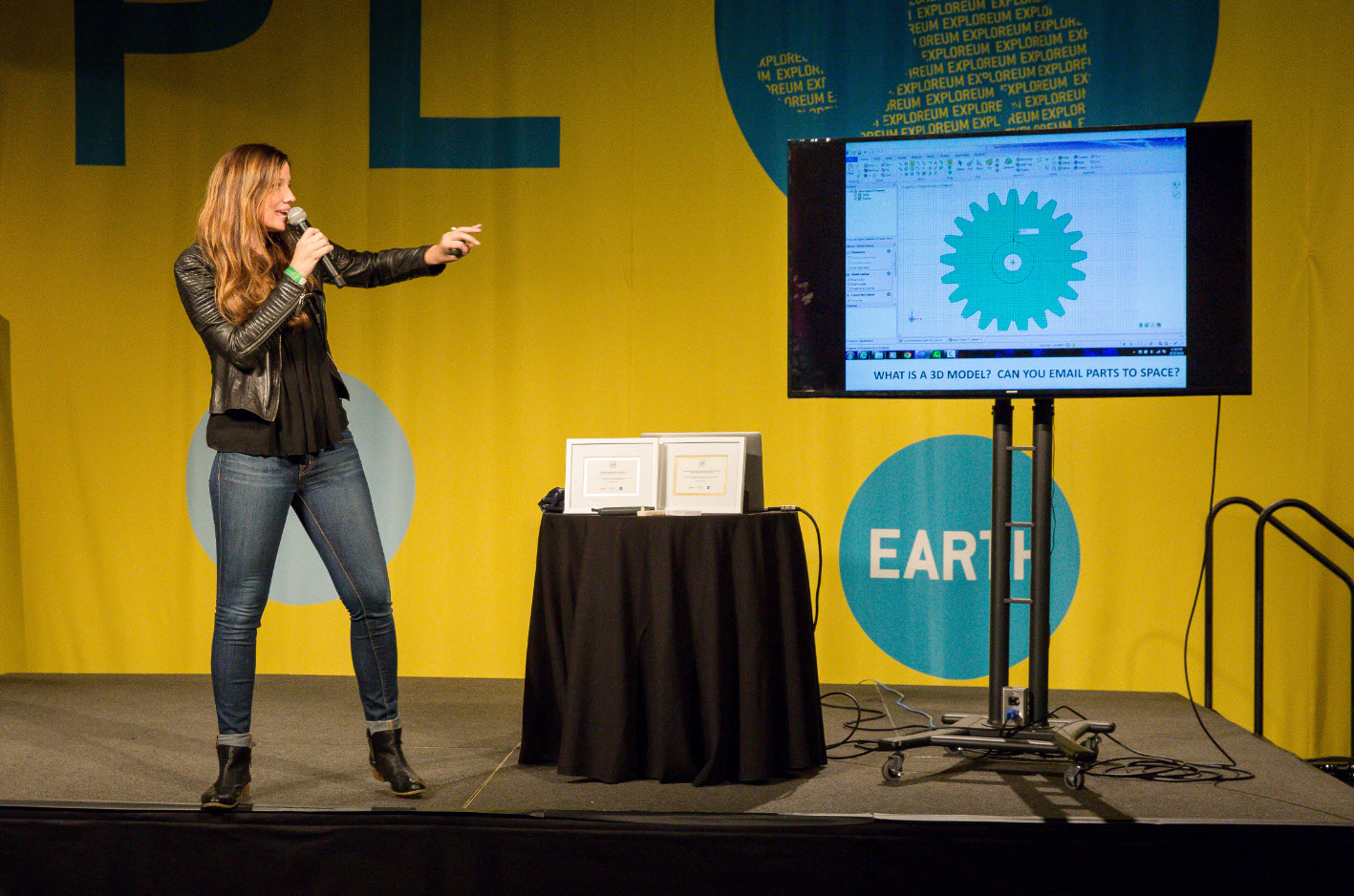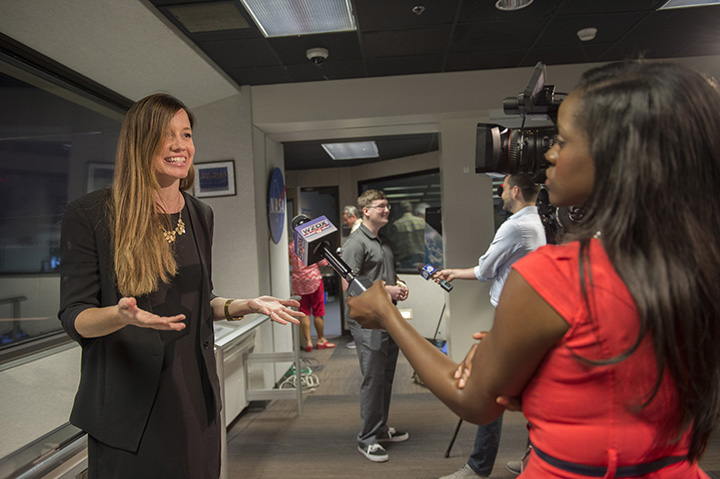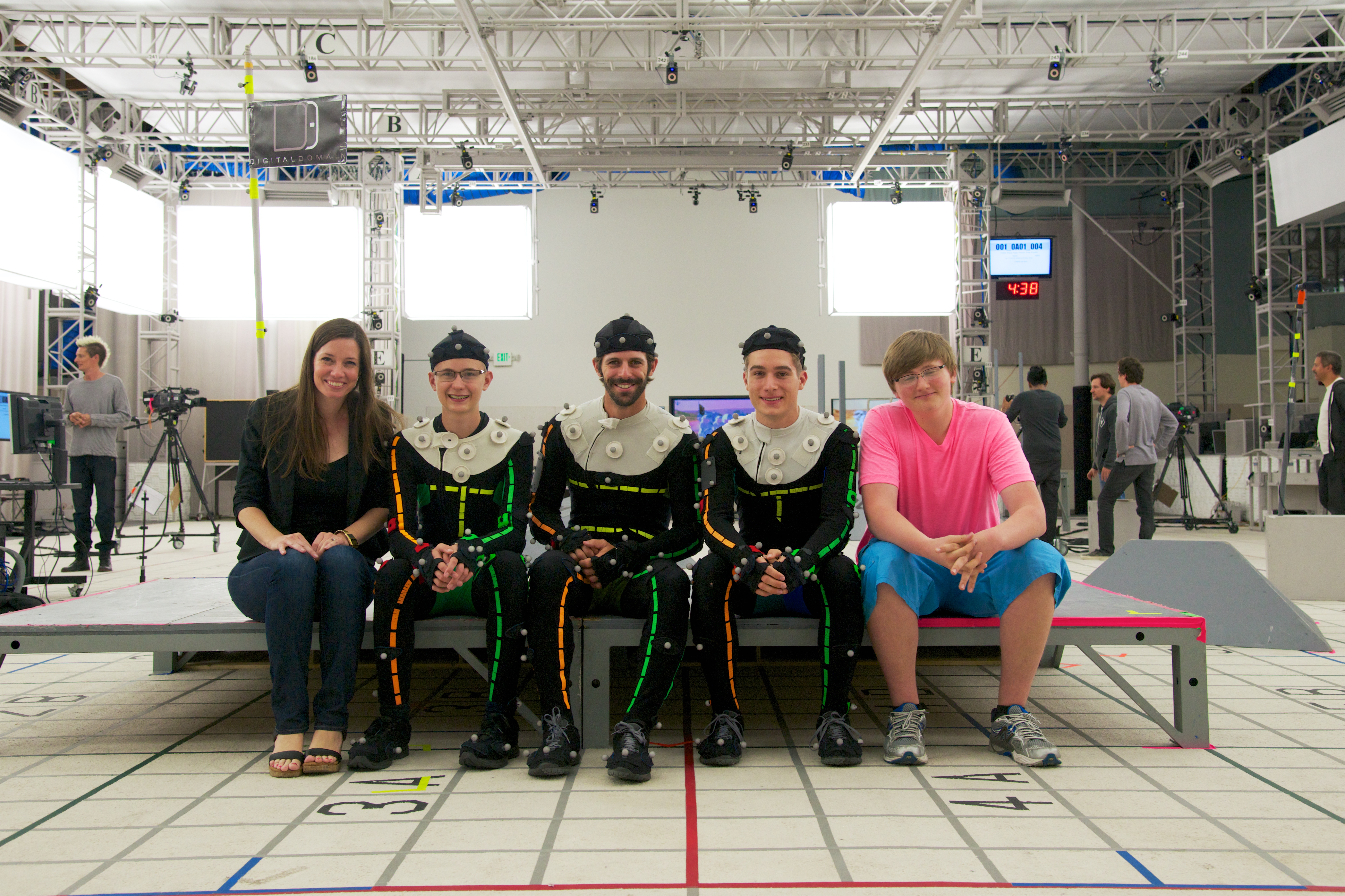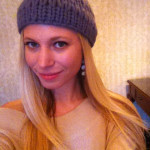
Deanne Bell presenting at the Intrepid Space Science Festival
WHEN YOU TALK ABOUT A MODERN-DAY RENAISSANCE WOMAN, Deanne Bell pretty much fits that bill to a T. Since she was a child, Bell was interested in engineering. After earning her degree and working at Raytheon, designing opto-mechanics for military aircraft sensors, she then made the transition to television host for the Peabody Award-winning children’s series, Design Squad. Since hosting Design Squad, Bell has gone on to host numerous shows, and also founded Future Engineers, a prize-based competition for grades K-12 students that hosts challenges with the goal of inspiring children about engineering. As if that wasn’t enough, Future Engineers is supported by two of their partners: NASA and The American Society of Mechanical Engineers (ASME). Bell spoke with Lady Clever about her path to engineering, transitioning to hosting television, and how she cold-called NASA to pitch her idea for Future Engineers.
You’ve been interested in creating since you were a child, and would build things out of broken appliances and auto parts. What was it that intrigued you about design from such an early age?
I grew up in a family where we made “stuff.” Lots and lots of stuff. No matter how ugly it may have been, my parents would always put that “stuff” on display, reinforcing that they loved the process, not just the product. Halloween costumes were always constructed from scratch and our Christmas tree was decorated with our handicrafts. This desire to create could have propelled me in a multitude of directions, but my passion for engineering-related design specifically was ignited and nurtured by an after-school program that my friends and I participated in. We would invent and build inventions almost every day while listening to the Dirty Dancing soundtrack on repeat. We would make our whimsical ideas come to life using cardboard, paint, wood, and motors that we would salvage from broken appliances or old auto parts. I learned to use basic power tools by the time I was 13, which paired well with my stubborn personality because those skills allowed me to build and fail and try again.
Did you ever experience an internal debate between pursuing your passion in engineering or exploring a different path?
There has always been an internal debate.
In ninth grade, I remember wanting to be either a veterinarian or an inventor. The term “engineering” was completely confusing to me. As I got closer to choosing a major, it was tough to choose because I had a lot of interests. I specifically chose a well-rounded school so I could test out if it was the right path for me, and if it wasn’t, I could bail to another major. But I didn’t.
As a college student, I had a mid-college crisis. I was often doing problem sets in the wee hours of the night that were uninspiring at times. My creativity felt like it was being suffocated. Thankfully, I had a mentor in college who noticed my frustration and talked to me at length about the many opportunities in industry that awaited.
As a professional engineer, there have been many times when I felt like I didn’t fit the mold. Yes, I was capable in my role, but it felt like I had this Clark Kent & Superman syndrome. At work, I used one half of my capabilities. Outside of work, I nurtured the other half. It’s taken me many years to develop the confidence I needed to create my own career that allowed me to be Clark Kent and Superman at the same time, professionally. But I’m a woman, so I guess that makes me Wonder Woman. I do fly a lot, just not in a leotard.

Image Credit: NASA
What drew you away from working as an engineer yourself to hosting a show for children about engineering?
I never left engineering. What drew me away from my traditional office job was my desire to travel. I took a leave of absence from my corporate job to backpack solo around Asia and Australia. I was in a hostel in Manila surfing the web for the first time in months, when I came across a job posting for a mechanical engineer to host a TV show. I sent in my picture and a short blurb about myself. In a nutshell, the casting director replied, “You look great, but our last audition is in two days in Boston.” I said, “I’m in the Philippines, can you wait?” They said, “Let us know if you can make it.” That night, I had a glass of wine with a German pig farmer and he said I should go, and I knew he was right. So, I managed to swap my tickets around and flew to Boston. Thankfully, I got the job.
What was it like to partner with the ASME Foundation & NASA on Future Engineers? Was it an easy sell, or did they need to be convinced?
I cold-called NASA to start Future Engineers. How awesome is that?! I knew that NASA was sending a 3D printer to space and I wanted to create a national challenge where students designed an object to be 3D printed on the International Space Station. I called NASA’s In-Space Manufacturing Manager to pitch my idea, and to my surprise, she loved it <eek! Pinch me>. Then, I cold-called the American Society of Mechanical Engineers Foundation and they loved it as well <eek! This might actually happen>. Everyone believed in the idea, but it took a lot of collective persistence for us to get the right framework in place to make our first challenge happen. Once we did, however, NASA & ASME announced our ambitions at a White House event <eek! Pinch me again>. I put so much pressure on myself to deliver the best product I could imagine, but it paid off. ASME won a prestigious Power of A Summit Award. NASA was awarded Best Challenge for Students over the past five years at a Federal Challenges and Prizes event. And, Future Engineers was named a 2016 Breakthrough Award winner by Popular Mechanics.

Deanne Bell with prizewinners at the Digital Domain competition
How do you come up with the design challenges for Future Engineers?
We begin with brainstorming how to take an engineering topic and make it relatable to kids. It’s easy to think of silly challenges, but it’s harder to take what a PhD is doing and make it relevant to kids. So we start there: by identifying a research effort that we think has the “kid factor.” Next, we put a lot of thought into picking themes that will give us the broadest range of results. For example, for our very first space tool challenge, first-time designers submitted 3D models of tweezers or a paperclip, while more advanced users submitted more complex multi-tools and medical implements. It’s important that what the students innovate feels unique to them. If everyone makes the same paperclip, it doesn’t feel like yours. It doesn’t build their pride and confidence in engineering.
Why is it important to have programs like Future Engineers for children?
The term “engineer” isn’t just meant for a person who has a degree. It’s also a verb, and I want that verb to be more approachable. That’s why I want to pair engineering challenges with things that kids know and can relate to. Yes, it’s important for students to have a basic engineering fluency in our increasingly tech-centric world, but on an even broader level, it’s important to empower students with the skillsets and confidence they need to turn their ideas into a reality. In its simplest form, that is what engineering is all about, whether you get a degree in it or not. There is a reason politicians talk about the importance of STEM. This ability to make something from nothing is key for driving innovation, starting small businesses, creating jobs, and stimulating our economy. Current research shows we need to engage students, particularly girls with STEM, by the time they are 12. My opinion: why wait until 12? Let’s start in kindergarten. Take Apple for example: They put their computers in schools, and now we have a generation of adults fluent in Apple products. If we engage students with engineering challenges in K-12, we can cultivate a new generation of innovators.
We can’t wait to see what they come up with next!
♀
To learn more about Future Engineers, visit their website, and follow Deanne on Twitter.



-300x169.jpg)












